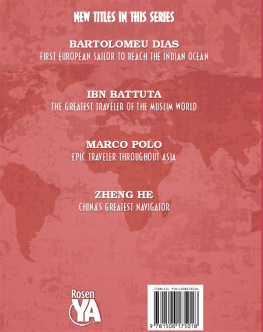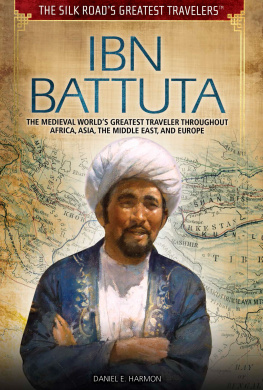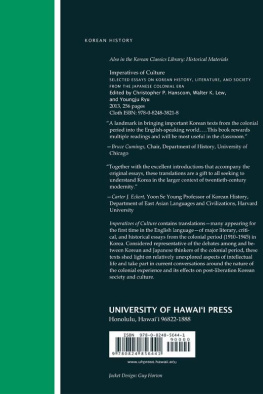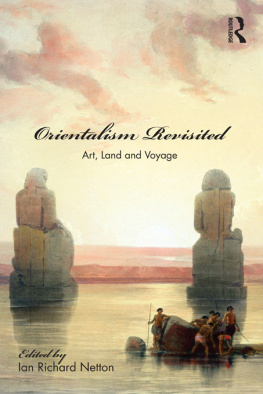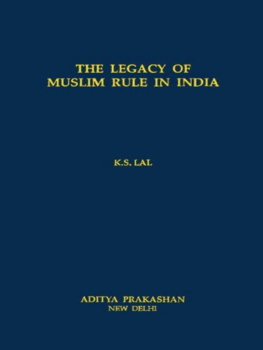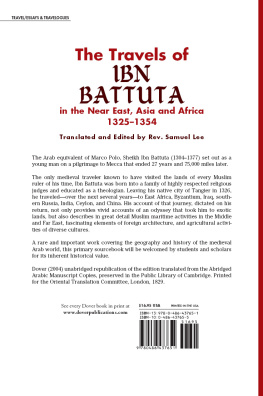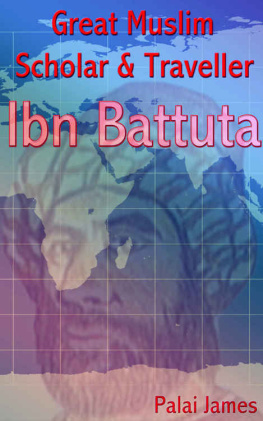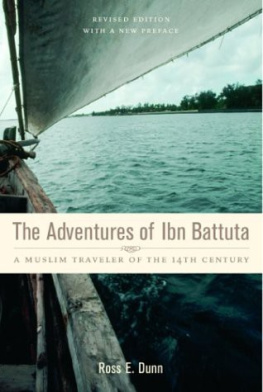For my niece Emi, who likes to explore new places
Published in 2018 by The Rosen Publishing Group, Inc.
29 East 21st Street, New York, NY 10010
Copyright 2018 by The Rosen Publishing Group, Inc.
First Edition
All rights reserved. No part of this book may be reproduced in any form without permission in writing from the publisher, except by a reviewer.
Library of Congress Cataloging-in-Publication Data
Names: Toth, Henrietta, author.
Title: Ibn Battuta : the greatest traveler of the Muslim world / Henrietta Toth.
Description: New York : Rosen Publishing, 2018. | Series: [Spotlight on explorers and colonization] | Includes bibliographical references and index.
Identifiers: LCCN 2016055893 | ISBN 9781508175018 (library bound book) | ISBN 9781508174998 (pbk. book) | ISBN 9781508175001 (6 pack)
Subjects: LCSH: Ibn Batuta, 13041377Juvenile literature. |
TravelersIslamic EmpireBiographyJuvenile literature.
Classification: LCC G93.I24 T68 2018 | DDC 910.92 [B] dc23
LC record available at https://lccn.loc.gov/2016055893
Manufactured in the United States of America
CONTENTS
A MEDIEVAL TRAVELER
A MUSLIM PILGRIM
LIFE BEFORE TRAVELS
TRAVEL BY LAND AND SEA
TRAVELS FROM 1325 TO 1330
TRAVELS FROM 1330 TO 1333
TRAVELS FROM 1333 TO 1346
TRAVELS FROM 1346 TO 1354
LIFE ON THE ROAD
ATTITUDES AND OPINIONS
LIFE AFTER TRAVELS
THE RIHLA
IBN BATTUTAS LEGACY
CELEBRATING IBN BATTUTA
IBN BATTUTA AND MARCO POLO
GLOSSARY
FOR MORE INFORMATION
FOR FURTHER READING
BIBLIOGRAPHY
INDEX
A MEDIEVAL TRAVELER
I bn Battuta is the best-known medieval Arab traveler, explorer, and scholar. His full name was Abu Abdullah Muhammad Ibn Battuta. He was the first traveler of the pre- modern age to cover the greatest distances. In 1325, when he was twenty-one years old, Ibn Battuta set out from Morocco. He traveled about 75,000 miles (120,700 kilometers) across more than forty modern-day countries in the Eastern Hemisphere. His trip took nearly thirty years. Ibn Battuta crisscrossed and backtracked across Africa, Asia, and Europe. He journeyed across the Middle East and twice crossed the Sahara on ambitious, adventurous, and dangerous expeditions.
The Moroccan explorer Ibn Battuta is depicted on his travels through Egypt. This color drawing by French illustrator Lon Benett appeared in an 1878 novel by Jules Verne.
Ibn Battuta did not explore undiscovered lands. Instead, his travels took him to distant countries settled and governed by Muslims. In the Arabic language the word quest (or travels) is the word rihla. He traveled within the Islamic world, also called Dar al-Islam. His book is titled Rihla, which is a record of different Muslim cultures in the fourteenth century. Rihla is considered one of the most famous travel books in history.
A MUSLIM PILGRIM
T he main reason Ibn Battuta traveled was to make a pilgrimage. The pilgrimage, or hajj, was to the sacred city of Mecca in present-day Saudi Arabia. This hajj fulfilled one of the five sacred pillars, or duties, of Islam. It also fulfilled Ibn Battutas responsibility as a Muslim to seek knowledge. Ibn Battuta was excited to learn more about Islam and the law. He studied with religious and legal scholars across the Muslim world. During his travels, Ibn Battuta made the pilgrimage to Mecca seven times.
Early in his journey, Ibn Battuta discovered that he liked traveling. He was interested in meeting other pilgrims and travelers and learning about them. He also had a desire to experience Islam in different cultures. In the fourteenth century, Dar al-Islam was vast, extending from southern Spain to Africa, across the Arabian Peninsula, north to Turkey and southern Russia, and south to India, Indonesia, and southern China.
In Mecca, Muslim pilgrims encircle the Kabah shrine in the Great Mosque as shown in this nineteenth-century engraving.
LIFE BEFORE TRAVELS
I bn Battuta was born on February 24, 1304 in Tangier, Morocco, on the northwest coast of Africa. Ibn Battuta briefly mentions his childhood in the Rihla. His family was of Berber descent. They were nomads who traveled the desert on camels and horses. They moved with their tents and made their living through trade. Ibn Battutas father settled down in Tangier and became a scholar of Islam. Several members of Ibn Battutas family became Muslim judges, or qadis, who presided over religious matters.
Ibn Battuta was educated in the tradition of his Islamic faith. His family expected that he would also become a judge.
The old medina quarter of Ibn Battutas hometown of Tangier, Morocco, overlooks the Mediterranean Sea and the Spanish coast.
No one knows what Ibn Battuta looked like. A modern-day portrait of Ibn Battuta is displayed at the Ibn Battuta Mall in Dubai, United Arab Emirates. He probably had a beard and wore a traditional long robe and turban. The Rihla reveals that Ibn Battuta was charming and opinionated. He also enjoyed having money and living well.
TRAVEL BY LAND AND SEA
D uring his journey, Ibn Battuta rode camels, donkeys, horses, and mules. He walked and sat on wagons. Sometimes Ibn Battuta joined a caravan of pilgrims. Hundreds of pilgrims traveled together to avoid being robbed and killed by thieves. Ibn Battuta also sailed aboard boats and ships along the coast of Africa, down the Red Sea, and across the Black Sea.
Ibn Battuta trekked over deserts, isolated lands, and mountains. Sometimes travel was easier when following established trade routes like the Silk Road. Local rulers protected some expeditions. Travelers risked attacks by pirates, rebels, and nomads and getting caught in rebellions and wars. People drowned in flash floods and aboard sinking ships. Illness, hunger, thirst, heat, and cold made travel miserable. In some years Ibn Battuta journeyed farther distances than in others. He stayed a few weeks to several months or years in a location before moving on.
A camel caravan winds through the sand dunes of the Sahara. Ibn Battuta traveled with large caravans for safety.

